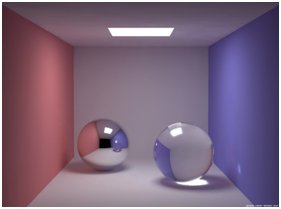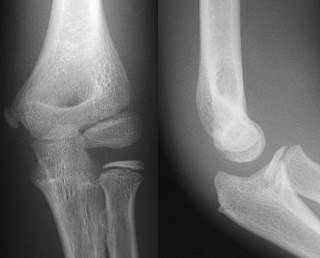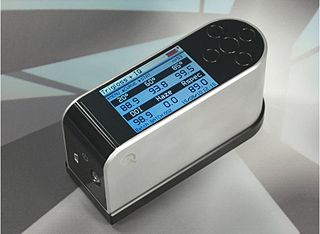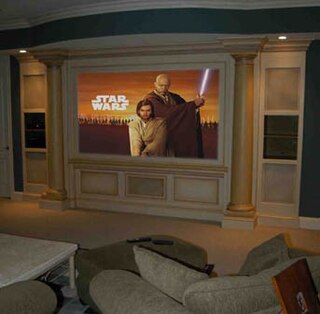This article needs additional citations for verification .(December 2014) |
Gain is a property of a projection screen and is one of the specifications quoted by projection screen manufacturers.
This article needs additional citations for verification .(December 2014) |
Gain is a property of a projection screen and is one of the specifications quoted by projection screen manufacturers.
The measured number is called the peak gain at zero degrees viewing axis. It represents the gain value for a viewer seated along a line perpendicular to the screen's viewing surface. The gain value represents the screen's brightness ratio relative to a set standard (in this case, a sheet of magnesium carbonate). Screens with a higher brightness than this standard are rated with a gain higher than 1.0, while screens with lower brightness are rated from 0.0 to 1.0. Since a projection screen is designed to scatter the impinging light back to the viewers, the scattering can be highly diffuse or highly concentrated. Highly concentrated scatter results in a higher screen gain (a brighter image) at the cost of a more limited viewing angle (as measured by the half-gain viewing angle), whereas highly diffuse scattering results in lower screen gain (a dimmer image) with the benefit of a wider viewing angle.

A computer monitor is an output device that displays information in pictorial or textual form. A discrete monitor comprises a visual display, support electronics, power supply, housing, electrical connectors, and external user controls.

Optics is the branch of physics that studies the behaviour and properties of light, including its interactions with matter and the construction of instruments that use or detect it. Optics usually describes the behaviour of visible, ultraviolet, and infrared light. Light is a type of electromagnetic radiation, and other forms of electromagnetic radiation such as X-rays, microwaves, and radio waves exhibit similar properties.

A 3D projection is a design technique used to display a three-dimensional (3D) object on a two-dimensional (2D) surface. These projections rely on visual perspective and aspect analysis to project a complex object for viewing capability on a simpler plane.
The contrast ratio (CR) is a property of a display system, defined as the ratio of the luminance of the brightest shade (white) to that of the darkest shade (black) that the system is capable of producing. A high contrast ratio is a desired aspect of any display. It has similarities with dynamic range.
A silver screen, also known as a silver lenticular screen, is a type of projection screen that was popular in the early years of the motion picture industry and passed into popular usage as a metonym for the cinema industry. The term silver screen comes from the actual silver content embedded in the material that made up the screen's highly reflective surface.

Solar irradiance is the power per unit area received from the Sun in the form of electromagnetic radiation in the wavelength range of the measuring instrument. Solar irradiance is measured in watts per square metre (W/m2) in SI units.

A projection screen is an installation consisting of a surface and a support structure used for displaying a projected image for the view of an audience. Projection screens may be permanently installed on a wall, as in a movie theater, mounted to or placed in a ceiling using a rollable projection surface that retracts into a casing, painted on a wall, or portable with tripod or floor rising models as in a conference room or other non-dedicated viewing space. Another popular type of portable screens are inflatable screens for outdoor movie screening.

Gloss is an optical property which indicates how well a surface reflects light in a specular (mirror-like) direction. It is one of the important parameters that are used to describe the visual appearance of an object. Other categories of visual appearance related to the perception of regular or diffuse reflection and transmission of light have been organized under the concept of cesia in an order system with three variables, including gloss among the involved aspects. The factors that affect gloss are the refractive index of the material, the angle of incident light and the surface topography.

A lenticular lens is an array of lenses, designed so that when viewed from slightly different angles, different parts of the image underneath are shown. The most common example is the lenses used in lenticular printing, where the technology is used to give an illusion of depth, or to make images that appear to change or move as the image is viewed from different angles.
The Blinn–Phong reflection model, also called the modified Phong reflection model, is a modification developed by Jim Blinn to the Phong reflection model.
In astronomy, the geometric albedo of a celestial body is the ratio of its actual brightness as seen from the light source to that of an idealized flat, fully reflecting, diffusively scattering (Lambertian) disk with the same cross-section.

Large-screen television technology developed rapidly in the late 1990s and 2000s. Prior to the development of thin-screen technologies, rear-projection television was standard for larger displays, and jumbotron, a non-projection video display technology, was used at stadiums and concerts. Various thin-screen technologies are being developed, but only liquid crystal display (LCD), plasma display (PDP) and Digital Light Processing (DLP) have been publicly released. Recent technologies like organic light-emitting diode (OLED) as well as not-yet-released technologies like surface-conduction electron-emitter display (SED) or field-emission display (FED) are in development to supersede earlier flat-screen technologies in picture quality.

Projectional radiography, also known as conventional radiography, is a form of radiography and medical imaging that produces two-dimensional images by X-ray radiation. The image acquisition is generally performed by radiographers, and the images are often examined by radiologists. Both the procedure and any resultant images are often simply called 'X-ray'. Plain radiography or roentgenography generally refers to projectional radiography. Plain radiography can also refer to radiography without a radiocontrast agent or radiography that generates single static images, as contrasted to fluoroscopy, which are technically also projectional.

The technology of television has evolved since its early days using a mechanical system invented by Paul Gottlieb Nipkow in 1884. Every television system works on the scanning principle first implemented in the rotating disk scanner of Nipkow. This turns a two-dimensional image into a time series of signals that represent the brightness and color of each resolvable element of the picture. By repeating a two-dimensional image quickly enough, the impression of motion can be transmitted as well. For the receiving apparatus to reconstruct the image, synchronization information is included in the signal to allow proper placement of each line within the image and to identify when a complete image has been transmitted and a new image is to follow.
The viewing cone refers to the effective viewing directions of an LCD display, as seen from the eye. This collection of angles resembles a cone. The concept has been introduced as an international standard ISO 13406-2, which defines it as the range of viewing directions that can safely be used for the intended task without "reduced visual performance". This standard describes a complex procedure which evaluates the viewing cone from measurements of luminance and chromaticity versus direction of observation. ISO 13406-2 introduces 4 viewing direction range classes, from a wide viewing cone, for many simultaneous observers, to the so-called "privacy display", with a severely limited viewing cone. Compliance routes for different display applications can now be found in the successor standard ISO 9241-300.
Contrast, in physics and digital imaging, is a quantifiable property used to describe the difference in appearance between elements within a visual field. It is closely linked with the perceived brightness of objects and is typically defined by specific formulas that involve the luminances of the stimuli. For example, contrast can be quantified as ΔL/L near the luminance threshold, known as Weber contrast, or as LH/LL at much higher luminances. Further, contrast can result from differences in chromaticity, which are specified by colorimetric characteristics such as the color difference ΔE in the CIE 1976 UCS.

A glossmeter is an instrument which is used to measure specular reflection gloss of a surface. Gloss is determined by projecting a beam of light at a fixed intensity and angle onto a surface and measuring the amount of reflected light at an equal but opposite angle.

Optimum HDTV viewing distance is the distance that provides the viewer with the optimum immersive visual HDTV experience.
This glossary defines terms that are used in the document "Defining Video Quality Requirements: A Guide for Public Safety", developed by the Video Quality in Public Safety (VQIPS) Working Group. It contains terminology and explanations of concepts relevant to the video industry. The purpose of the glossary is to inform the reader of commonly used vocabulary terms in the video domain. This glossary was compiled from various industry sources.
There are two different types of haze that can occur in materials: